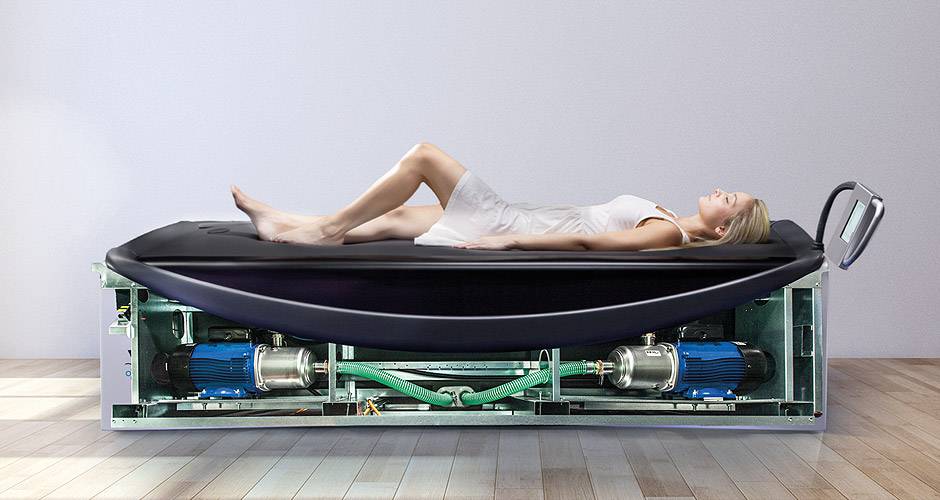Table Of Contents:
- The Science Behind Hydromassage and Better Circulation
- Key Takeaways
- What Is Hydromassage and How Does It Work?
- Defining Hydromassage and Its Primary Components
- The Mechanical Process Behind Water Jets and Pressure
- The Role of Hydromassage in Enhancing Blood Circulation
- Understanding Blood Flow Dynamics During a Massage Session
- Key Factors That Promote Circulation Through Hydromassage
- Comparing Traditional Massage to Hydromassage for Circulation
- Distinctions in Technique Between Manual and Water Massages
- Evaluating the Effectiveness of Each Method on Blood Flow
- Health Benefits Beyond Improved Circulation With Hydromassage
- Stress Reduction and Its Impact on Cardiovascular Health
- Mobility Improvements Linked to Regular Hydrotherapy Sessions
- Scientific Studies Supporting the Efficacy of H Ydr O Message
- Conclusion
The Science Behind Hydromassage and Better Circulation

Hydromassage, a revolutionary therapy gaining popularity in family medicine, offers a unique approach to improving circulation and overall health. This innovative treatment combines the benefits of traditional massage with the power of water, providing a non-invasive way to stimulate the nervous system and enhance blood flow. For those seeking a holistic approach to health management, hydromassage presents an intriguing option that complements the work of dietitians and other healthcare professionals. In this article, we’ll explore the science behind hydromassage and its impact on circulation, offering valuable insights for both new and existing patients. Keep reading to discover how this cutting-edge therapy could revolutionize your wellness journey.
Key Takeaways
- Hydromassage combines water pressure and temperature to enhance circulation and promote relaxation
- The therapy may benefit various conditions, including chronic fatigue syndrome and cardiovascular issues
- Hydromassage offers a non-invasive alternative to traditional massage, with customizable pressure and coverage
- Scientific studies support hydromassage‘s effectiveness in improving blood flow and reducing stress
- Regular hydromassage sessions can contribute to better mobility and overall wellness
What Is Hydromassage and How Does It Work?

Hydromassage combines water and pressure to offer therapeutic benefits, influencing circulation and thermoregulation. This innovative technique, often recommended for chronic fatigue syndrome, uses powerful water jets to massage the body. The process mimics the effects of swimming, stimulating genes associated with relaxation and healing. Patient education about hydromassage often highlights its ability to improve blood flow and reduce muscle tension, making it a valuable tool in holistic wellness approaches. Consider booking a new patient appointment today!
Defining Hydromassage and Its Primary Components
Hydromassage, a therapeutic technique combining water and pressure, offers various health benefits for individuals seeking alternative therapies. This method involves powerful water jets that massage the body, potentially aiding in stress reduction, improved circulation, and even management of conditions like diabetes. As part of a holistic lifestyle approach, hydromassage complements other wellness practices such as colon cleansing, providing a non-invasive option for those looking to enhance their overall health:
- Utilizes water jets for targeted pressure
- Promotes relaxation and stress relief
- Improves circulation throughout the body
- Complements other holistic health practices
- May benefit individuals with chronic conditions
The Mechanical Process Behind Water Jets and Pressure
Hydromassage employs powerful water jets to deliver targeted pressure to the body, stimulating circulation and promoting relaxation. These jets, controlled by a sophisticated system, can be adjusted for intensity and location, allowing for customized treatments that may benefit individuals with various conditions, including epilepsy or constipation. The mechanical process behind hydromassage involves pressurized water being forced through small nozzles, creating a focused stream that mimics the hands of a skilled massage therapist:
- Pressurized water is directed through specialized nozzles
- Jet intensity and location can be adjusted for personalized treatments
- The system mimics manual massage techniques
- Water temperature can be regulated for optimal therapeutic effects
- Pressure variations stimulate different bodily responses
The Role of Hydromassage in Enhancing Blood Circulation
Hydromassage stands out as a potent method for enhancing blood circulation, as evidenced by numerous studies and a systematic review of its effects. This innovative therapy, endorsed by reputable institutions like the Cleveland Clinic, utilizes water pressure to stimulate blood flow throughout the body. The process not only affects surface-level circulation but also impacts deeper physiological functions, including breathing and lung capacity. By applying controlled pressure and temperature, hydro massage therapy creates a unique environment that promotes vasodilation and improved blood flow dynamics. Understanding these mechanisms provides insight into how hydromassage can be effectively utilized to boost overall circulatory health.
Understanding Blood Flow Dynamics During a Massage Session
During a hydromassage session, blood flow dynamics undergo significant changes, benefiting individuals with conditions like rheumatoid arthritis and migraines. The combination of water pressure and temperature stimulates vasodilation, enhancing circulation throughout the body. This process, rooted in alternative medicine principles, creates an experience that may reduce the risk of infection while promoting overall wellness. As the massage progresses, the body’s circulatory system responds to the applied pressure, leading to improved blood flow in targeted areas:
- Vasodilation occurs in response to water pressure and temperature
- Blood flow increases to targeted areas of the body
- Circulation improves throughout the entire system
- Potential benefits for various health conditions
- Enhanced oxygen and nutrient delivery to tissues
Key Factors That Promote Circulation Through Hydromassage
Hydromassage promotes circulation through several key factors, including the application of targeted pressure, temperature modulation, and rhythmic water movement. The combination of these elements stimulates blood flow, potentially benefiting individuals with conditions such as hypothyroidism or those recovering from injury. Primary care providers often recommend hydromassage as a complementary therapy, noting its ability to increase mineral absorption and reduce inflammation without the need for an ice pack. This non-invasive approach to improving circulation may contribute to overall health and disease prevention by enhancing the body’s natural healing processes.
Comparing Traditional Massage to Hydromassage for Circulation
Traditional massage and hydromassage offer distinct approaches to improving circulation, each with unique benefits for managing stiffness and injury. While manual techniques rooted in traditional Chinese medicine have long been employed to address blood pressure concerns, hydromassage introduces a novel water-based method. This comparison explores the fundamental differences in technique between hands-on and aquatic massages, examining their respective impacts on blood flow. By evaluating the effectiveness of each method, we can better understand how these therapies contribute to overall circulatory health and wellness.
Distinctions in Technique Between Manual and Water Massages
Manual and water massages employ distinct techniques to enhance circulation, each offering unique benefits for various conditions. Traditional massage relies on direct physical contact, utilizing hands-on manipulation to target specific muscle groups and pressure points. In contrast, hydromassage harnesses the power of water jets to deliver consistent pressure across larger body areas. This aquatic approach may prove particularly beneficial for individuals with neuropathic pain or shortness of breath, as it provides a gentler, more uniform stimulation. While both methods can complement treatments like infrared sauna therapy or botulinum toxin injections, hydromassage often requires less physical exertion from the practitioner and may be more easily covered by insurance:
- Manual massage uses direct physical contact
- Hydromassage employs water jets for pressure application
- Aquatic massage provides uniform stimulation over larger areas
- Hydromassage may be gentler for certain conditions
- Insurance coverage may differ between techniques
Evaluating the Effectiveness of Each Method on Blood Flow
Research comparing traditional massage and hydromassage reveals distinct impacts on blood flow. Traditional massage techniques effectively target specific areas, such as relieving low back pain or addressing carpal tunnel syndrome. Hydromassage, with its uniform pressure application, may offer broader benefits for conditions like ankylosing spondylitis. While traditional massage often incorporates elements like salt scrubs, hydromassage price points and accessibility make it an attractive option for those seeking regular circulatory improvement.
Health Benefits Beyond Improved Circulation With Hydromassage
Hydromassage offers a range of health benefits that extend beyond improved circulation. Research documented in medical databases highlights its potential to alleviate symptoms associated with heart failure and enhance lymphatic system function. This therapeutic approach has shown promise in reducing pain from conditions like sprained ankles, while also addressing broader health concerns. By combining the principles of hydrotherapy with targeted pressure, hydromassage provides a multifaceted approach to wellness, impacting both physical and mental health. The following sections explore how this innovative therapy contributes to stress reduction and mobility improvements, two key factors in overall health maintenance.
Stress Reduction and Its Impact on Cardiovascular Health
Hydromassage‘s stress-reducing effects significantly impact cardiovascular health, drawing attention from the field of cardiology. The soothing properties of water help burn away tension, promoting effective stress management. This therapeutic approach may lower blood pressure and heart rate, potentially reducing the risk of cardiovascular diseases.
Mobility Improvements Linked to Regular Hydrotherapy Sessions
Regular hydrotherapy sessions contribute significantly to mobility improvements, benefiting individuals with various conditions from foot ailments to premenstrual syndrome. The buoyancy of water reduces joint stress, allowing for increased range of motion and flexibility. This therapeutic approach, often studied in medical schools, can aid in weight loss efforts by enabling low-impact exercise and promoting overall physical activity.
Scientific Studies Supporting the Efficacy of Hydromassage
Scientific studies have demonstrated the efficacy of hydromassage in improving circulation and reducing health risks. Research shows that the controlled application of water pressure stimulates blood flow, potentially lowering the risk of cardiovascular issues. These findings highlight the importance of hydromassage as a complementary therapy for circulatory health.
Investigations into hydromassage reveal its potential to induce mild hyperthermia, which can enhance circulation and promote healing. This controlled elevation in body temperature has been linked to improved gait in patients with mobility issues. The combination of heat and pressure unique to hydromassage provides a therapeutic environment that supports physical recovery and overall wellness.
Studies focusing on the neurological effects of hydromassage indicate its role in facilitating learning and adaptation within the body. The sensory input from water pressure stimulates neural pathways, potentially enhancing the body’s ability to adapt to physical therapy and rehabilitation programs. This neuroplasticity aspect of hydromassage underscores its value in comprehensive wellness approaches.
Conclusion
Hydromassage harnesses the power of water and pressure to enhance circulation, offering numerous health benefits beyond improved blood flow. Scientific studies support its efficacy in reducing stress, enhancing mobility, and potentially lowering cardiovascular risks. The technique’s unique combination of controlled water pressure and temperature stimulates vasodilation, promoting better circulation throughout the body. As a non-invasive and accessible therapy, hydromassage plays a valuable role in holistic wellness approaches, complementing other health practices and supporting overall physical and mental well-being.
Experience the transformative benefits of hydromassage for yourself. At Gard Wellness, we’re committed to helping you achieve optimal health and wellness. To learn more about how hydromassage can support your wellness journey or to schedule an appointment, call us at (919) 322-4383. For your convenience, you can also book online. Take the first step towards improved circulation and overall well-being today.
